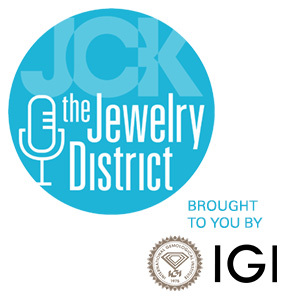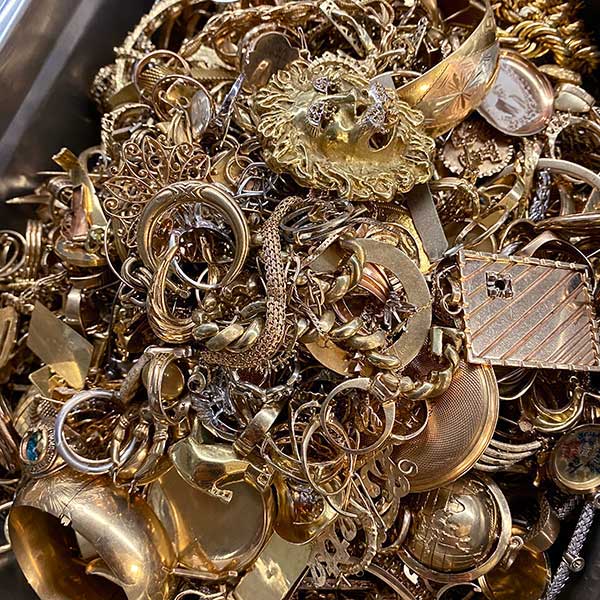
Just look at that image above. If you’re as intrigued by the glittering hodgepodge of gold chains, bracelets, bits, and bobs as I am, allow me to explain what it is: a snapshot of the junk pile. At least that’s what Elisa Casas, aka @chelseagirl.nyc, calls it on her lively Instagram feed, and said junk pile is where she sources some of her best vintage fine jewelry.
I had to find out more—digging through pounds upon pounds of random gold jewelry castoffs truly sounds like my idea of heaven. What follows is a recap of what I learned about Casas, her business, and her process.
First, her name may be familiar to any New Yorkers reading this, as Casas has a long history in the resale fashion space as the proprietor of three SoHo boutiques. The first was Chelsea Girl, which opened on Thompson Street in November 1993. “I was six months pregnant when I opened my little shop in SoHo, and, quite frankly, I didn’t know what I was doing,” she says. “But I was passionate about vintage clothing and jewelry, and that passion translated into a successful business.” Laurel Canyon (a onetime favorite shopping haunt of mine), Clutch!, and City Girl Café followed during a 17-year period…until Soho changed. “My arty clientele moved out and tourists moved in, my stores lost their leases and closed one by one, so I began selling exclusively through my website,” says Casas.
Cut to 2016, when Casas’ daughter Ruby set up an Instagram account for her. The format suited Casas well, as she’s a former photojournalist. Today, she’s selling exclusively through the platform, focusing mainly on antique gold-and-diamond jewelry, with about 15 to 20% of her inventory plucked from the junk pile.
“It’s such a fun way of shopping, and my customers are literally fascinated by it, so sharing my stories definitely keeps my ‘junk pile gang’ engaged and invested,” says Casas. “My customers tell me that they feel great about rescuing heirloom pieces literally days before they get melted down and lost forever. In their own small way, they’re preserving little bits of history.”
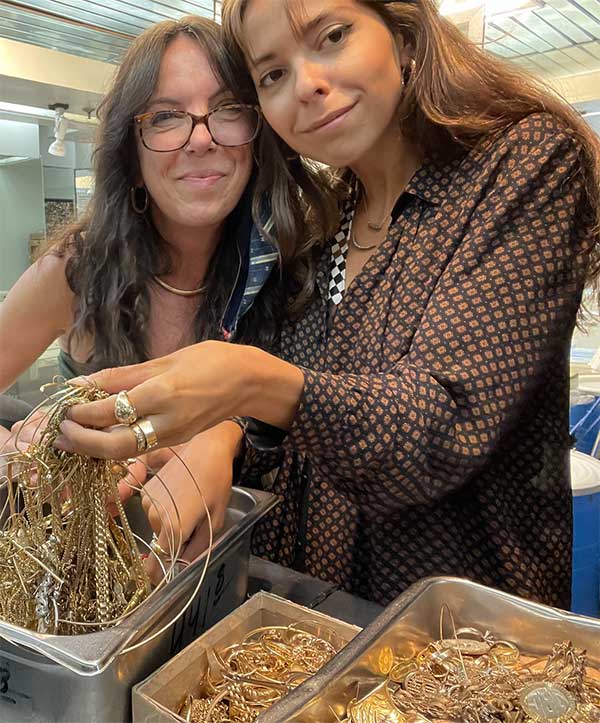
As for this newly initiated member of the junk pile gang, I needed specifics. Like, what is the junk pile by definition—and more to the point, where does one find one?
“What I affectionately call the ‘junk pile’ is more often called a ‘scrap pile,’” says Casas. “There are many businesses on 47th Street (and I assume in other cities) that buy gold, and it’s all thrown into big, dirty, tangled piles. The scrappers don’t care about the quality of the pieces, all they care about is the price of gold. When gold is down, they wait, and when gold goes up, they send it all to the melter and make their profit. In between, dealers like me can rifle through the piles for treasures. Being a treasure hunter all my life and loving the thrill of the hunt, I absolutely adore looking for that needle in a haystack! The pieces I choose are sold by weight, which is way under retail value, allowing me to offer special items to my customers at bargain prices.”
Not surprisingly, this dingy dragon’s lair of treasures is strictly the domain of the jewelry trade. “The junk pile guys are very strict about getting your company information, and they only take company checks as payment,” says Casas.
I also wanted to know: How on earth does one cut through the clutter to find pieces worth turning over? I distinctly recall experiencing an intense kind of overstimulation and fatigue digging through the clearance racks at the late, great Century 21 in downtown Manhattan. I can’t imagine what a pile of gold jewelry would do to my senses…
“I always buy my merchandise on instinct. If I want it, I assume my customers do also, so in that regard, shopping in the junk pile is really no different than shopping anywhere else. Of course, as a seller, I keep on top of the trends and I know what my customers like. So for example, I always purchase San Marco bracelets, which I find often, because of their popularity. And chains are suddenly hot, so I always look for good ones.”
The secret, she says, is to go through the pile methodically, piece by piece. “It’s so easy to overlook something special if you go too quickly. And you have to be really careful to screen for condition: Hollow items are often dented, rings are out-of-round, and deep file marks (from testing) are common. Sometimes an item just needs an easy repair (like a chain missing its clasp), and I’ll take it to my jeweler. Other times, I have to leave it behind.”
The junk pile is just one arrow in Casas’ quiver—she sources her goods from all over the world. “I have a dealer in Paris who buys high-end antique rings for me from all the auction houses. I buy online. I go to flea markets and auctions. I will look anywhere and everywhere for a fine piece of antique jewelry.”
But man, does she unearth hot little numbers among the rubble. Below, some of her most memorable finds.
“Once in a while, if the stones are small, the junk pile guys don’t bother to remove them, which is the best!” Casas says. “I rarely buy earrings because my daughter, who has her own company, Girl of the Earth, also digs in the junk pile and sells them on her website. But when I found one of these in the junk pile,” say says of the earrings below, “I prayed to find the other, and I did!”
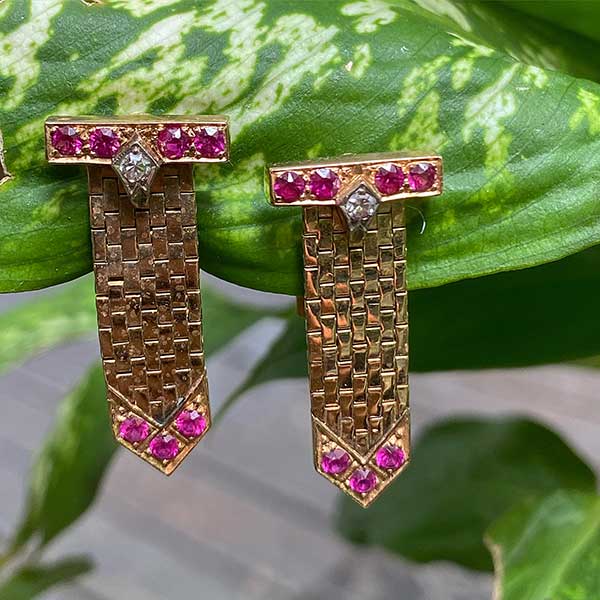
“Jewelry regret! I didn’t actually buy these: They were so expensive and I didn’t know what I would do with them,” Casas says of the chess pieces below. “But I took a photo, and when I posted it on Instagram, everyone went crazy. When I went back to get them the next day, they were gone.”
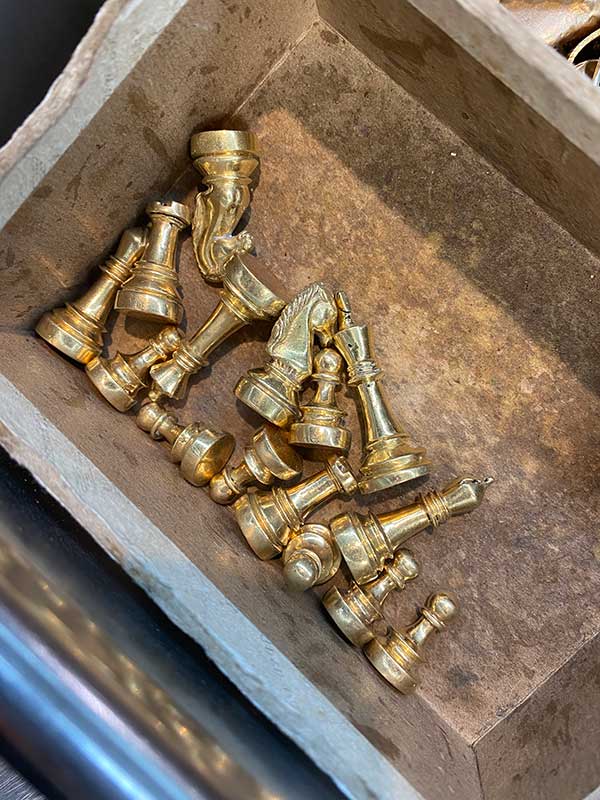
“Even though I knew it wasn’t superold, I appreciated the quality workmanship, so I bought it,” Casas says of the larger ring below, on the right. “When I showed it to my friend Janet, she gasped: It was a designer from the ’70s, whose pieces rarely come to market. Janet was a collector of hers, so I was thrilled to gift it to her!”
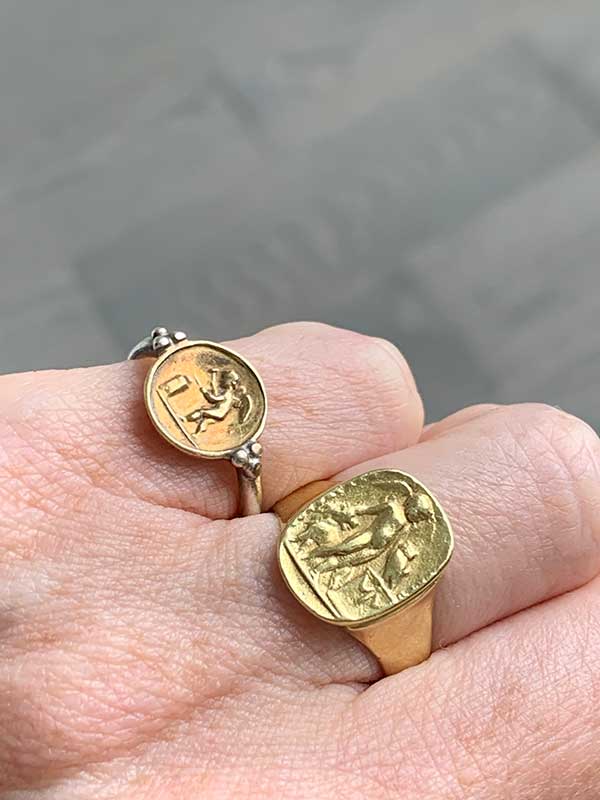
“This solid gold fob is a work of art. Fobs are not really my thing, but when you find something special like this, you instinctively know to buy it. It sold in one hot minute.”
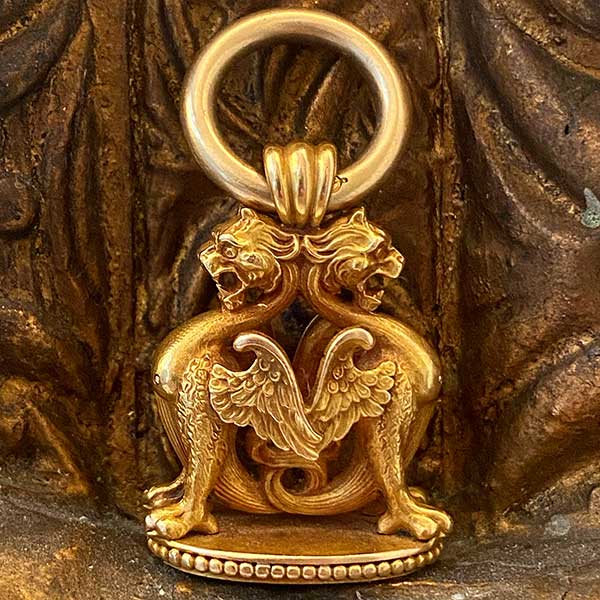
“Snake chain bracelets are a hot trend right now, and believe it or not, the old ones end up in the junk pile pretty frequently. Last week I found the heaviest one I ever saw, but it had some kinks, so I took it to my jeweler, and I pray that he can fix it. The great thing about the junk pile is, if you don’t sell it to a customer, you can just sell it back to them! So, often I take chances on pieces that I normally wouldn’t buy.”
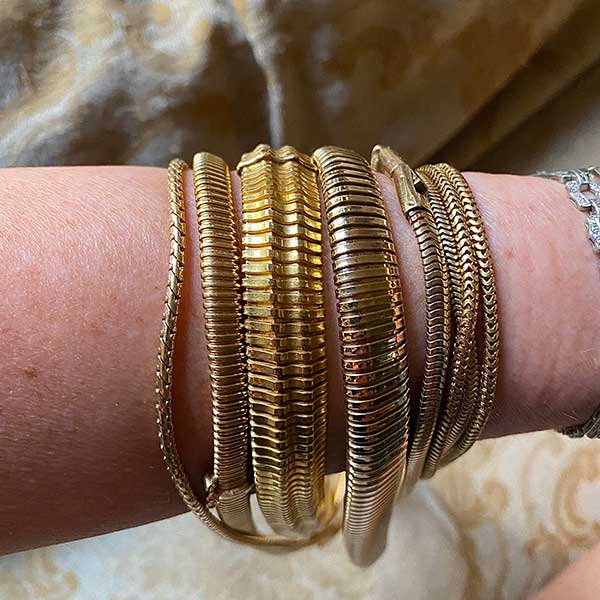
Top: “What I like most about the junk pile is how democratic it is: There are $10 charms and superheavy pieces that cost thousands of dollars,” says Elisa Casas. “And I have always liked the idea of appealing to a large demographic, offering fun, affordable pieces along with expensive estate items.” (All photos courtesy of @chelseagirl.nyc)
Follow me on Instagram: @aelliott718
- Subscribe to the JCK News Daily
- Subscribe to the JCK Special Report
- Follow JCK on Instagram: @jckmagazine
- Follow JCK on X: @jckmagazine
- Follow JCK on Facebook: @jckmagazine

